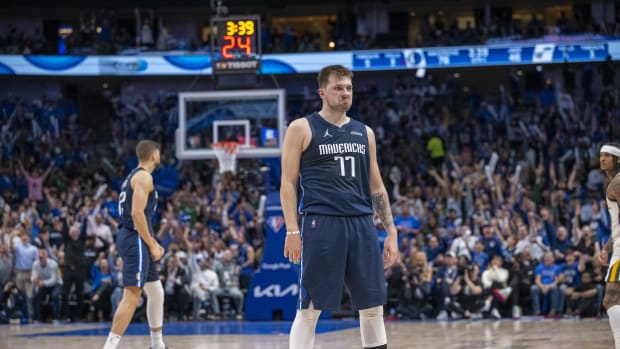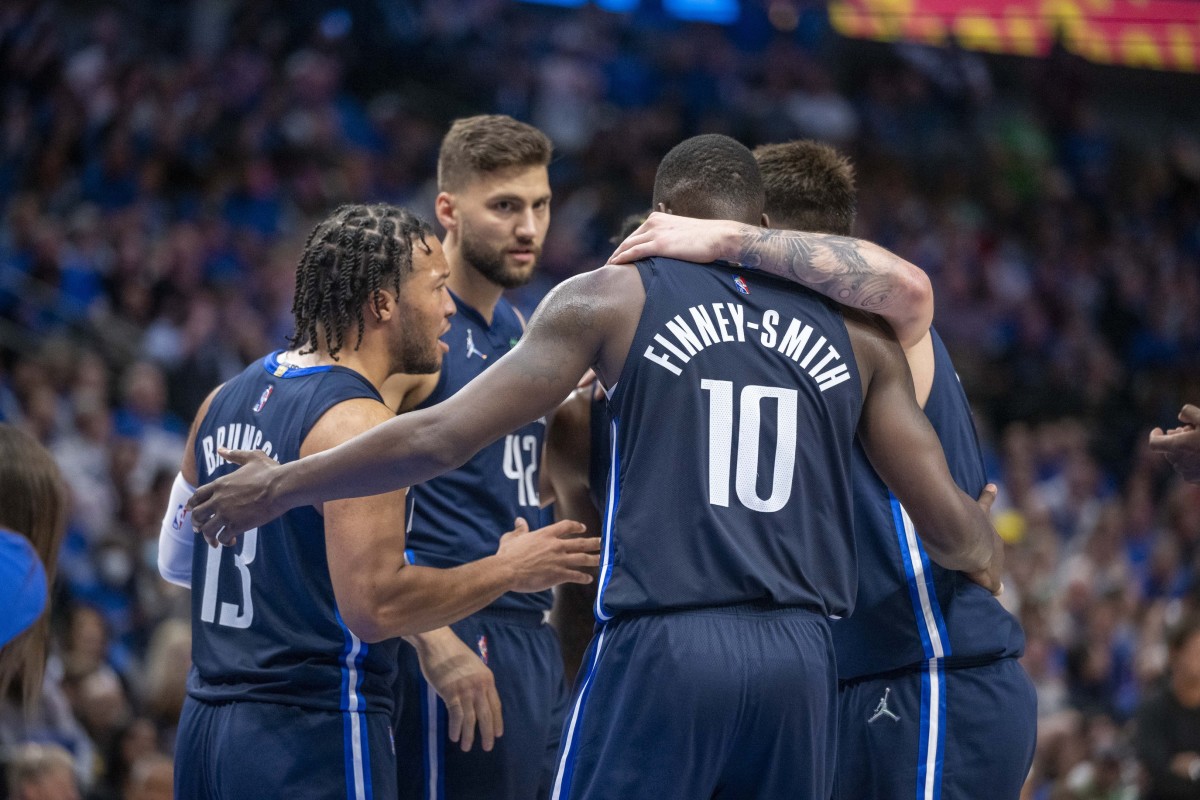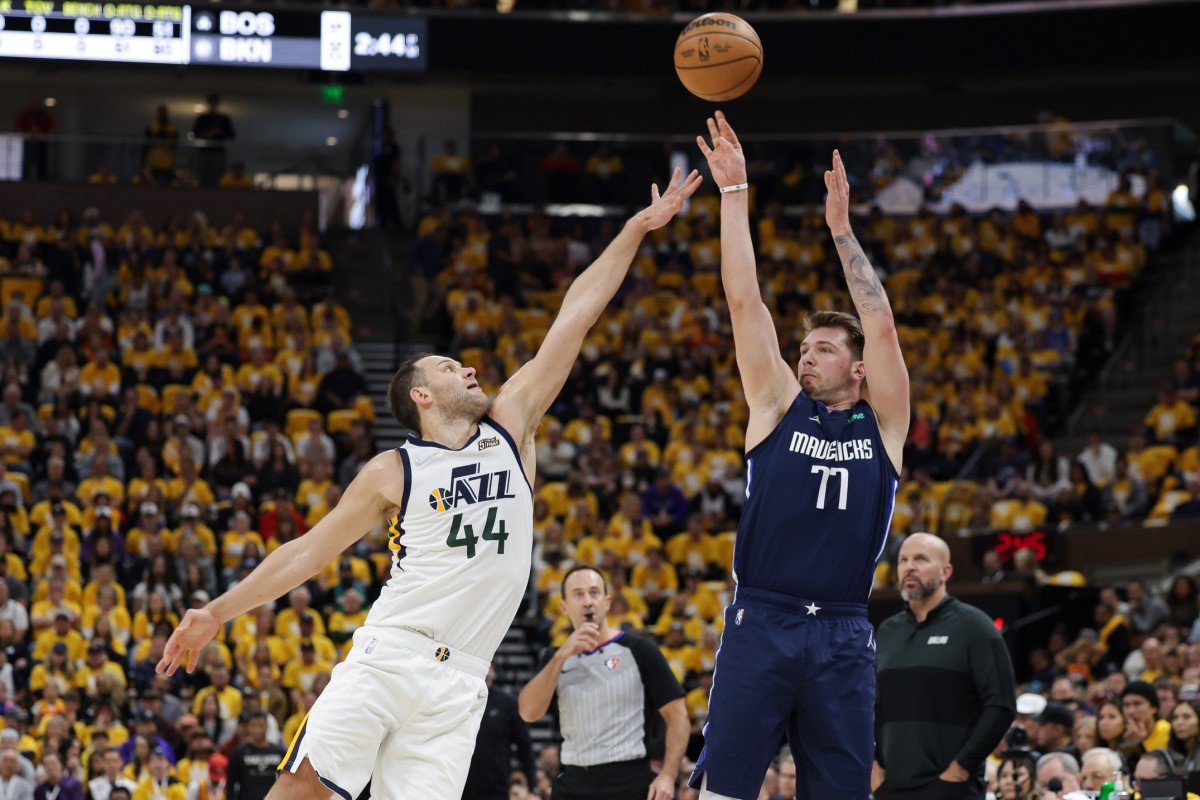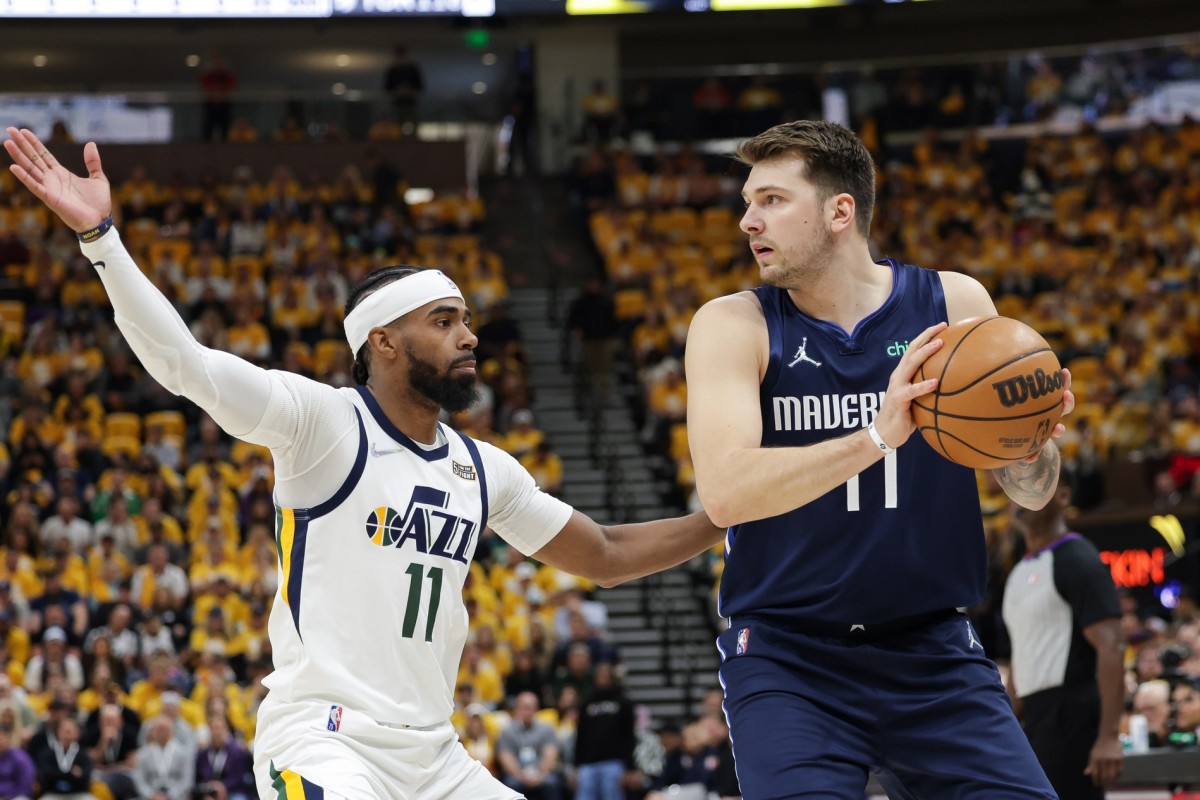Mavs Film Room: How Dallas, Doncic Put Jazz Defense In Checkmate
Coming off a Game 4 loss to the Utah Jazz, the Dallas Mavericks bounced back in a major way. The Mavs pulled off a 102-77 win in Game 5 to take a 3-2 series lead with Luka Doncic and Jalen Brunson combining for 57 points to set the tone.
One of the issues that plagued the Jazz defense in earlier parts of the series was their perimeter defenders' lack of effort and attentiveness. In Game 4, there was a sense of desperation to avoid falling behind 3-1.



Among the adjustments the Jazz made was Bojan Bogdanovic taking on the Luka Doncic assignment, picking him up full-court, aggressively going over ball screens and denying switches when possible. Regardless, Doncic still got what he wanted, but it presented more options to counter.
Here, we take a closer look at the Mavericks' approach on offense in their Game 5 win:
Mavericks, Doncic Make Next Chess Move
With how often teams soft switch basic screens that aren't necessary, the simplest way to create a weakness is to use a quick ball screen to draw a switch. As the natural progression of a playoff series unfolds, those soft switches go away.
The Jazz understand if they let a small guard or a big switch onto Doncic, they are consistently going to get picked apart. The Mavericks like to use a guard or wing as a ball screener to draw that switch. Throughout Game 4, Utah was aggressive in deploying a show and recover technique to deny that soft switch.
It appears Doncic views Jordan Clarkson and Mike Conley as the primary weak points to attack. It's rare they share the floor given the defensive limitations and how long Donovan Mitchell plays in the typical playoff game.
In Game 4, the Jazz began possessions with Bogdanovic doing his best to be aggressive defending Doncic early and then denying the switch when a wing like Reggie Bullock came to set a ball screen. With a big man waiting to protect the paint and the shot clock depleted by not getting the soft switch they sought, a tough shot was often the outcome.
A simple counter the Mavericks used in Game 5 when facing the Jazz show-and-recover ball-screen coverage was to use a re-screen on the original on-ball defender. In the play below, the goal is to make Clarkson have to take the Doncic assignment. By Doncic coming off the initial screen wide and then receiving a re-screen, Clarkson was placed in a position to have to switch.
With Brunson drifting to the corner as the strong-side spacer, there wasn't a defender in position to make an effective stunt to force Doncic to pick up his dribble. He drew the attention of the big at the rim and also made Mitchell, the low-man, have to help the helper, leaving Dorian Finney-Smith wide open in the corner.
With the Jazz having no shortage of weak points, the Mavericks did not waste time making adjustments. In Game 5, Dallas made it a point to involve multiple perimeter players in ball-screen coverage to force them to make quick reads and give effort.
Even a discombobulated possession in Game 4, using multiple ball screeners created enough chaos for Doncic's patience as a passer to generate an open shot. Bogdanovic lost tabs of Finney-Smith, giving up an open catch-and-shoot look.
What has helped the Mavericks throughout this series has been a few critical constants from the Jazz defense: (1) They will have a big man sagging off shooters or deep dropping, (2) They deploy guards they want to hide on defense and (3) Their perimeter players struggle with play recognition and giving consistent effort.
The strategy in Game 5 for the Mavericks was to attack all of those vulnerabilities in the Jazz defense and force multiple perimeter players to be brought directly into ball-screening actions by using more stack or Spain pick-and-roll sequences.
Early on, Rudy Gobert attempted to engage Doncic close to the level of the screen, setting up a prime opportunity for a back screen to get Dwight Powell a free run at the rim for a lob. Tying it all together was Bullock, who was guarded by Conley, being the back-screener since the Jazz have avoided switching when Conley is involved in ball-screen coverage.
Doncic was able to get to the rim for a clean layup using stack pick-and-roll on a later possession. With Doncic getting by Bogdanovic and Gobert getting back screened, Conley was put in a situation where he had to decide between helping on the drive or leaving Bullock open.
When the Jazz favored sending two defenders at the ball to prevent Doncic from turning the corner for a drive, Bullock was able to get clean looks from above the break. Bullock's man is simply unable to account for both him and the rim roller, creating the potential for a breakdown.
Even when the big determined he was going to stay attached to the rim roller as the back screen was developing, it places Conley (or whoever is in his place) to have to choose between helping on the drive or getting out to the shooter above the break.
Deploying stack pick-and-roll frequently is something to continue to watch for the Mavericks to do throughout the playoffs, similar to how Tim Hardaway Jr. was involved as the back screener often in last year's playoff matchup against the Los Angeles Clippers.
Where a significant difference lies between the Jazz and last year's Clippers matchup is there isn't a need to get the primary defender guarding Doncic switched off him. Instead of Kawhi Leonard or Paul George checking him, Doncic can just go to work against Bogdanovic when he wants.



When the 3-and-D wings on the team are no longer attempting to check the opposing team's star player, it causes a concerning trickle effect. Bogdanovic has experienced a major decline in scoring and is unable to contain Doncic. Factor in the advantages of using multiple ball screeners, and the Jazz do not have answers.
Run & Gun in Transition
The best way to not have to face a set defense is to not allow the opposition time to actually get set. The Mavericks have thrived when getting out on the break and working quickly.
With the Jazz understanding that Gobert has a size advantage, he's naturally going to be aggressive on the offensive glass. As a result, the Mavericks try to take full advantage of getting to the rim on the break when Gobert trails the play.
In Game 5, the Mavericks managed to play fast and made quick work spreading the Jazz defense out. There were plenty of situations when Utah was simply unable to get out on a catch-and-shoot threat either due to Dallas' quick ball movement or a drive that caused the defense to collapse to the paint led to an open look.
With the Mavericks deploying lineups with all shooting threats, Gobert is prone to get neutralized staying home. Brunson and Doncic each took advantage of an opportunity to attack the paint with Gobert being a non-factor in the play. The inability of the Jazz on-ball defenders to contain dribble penetration gets magnified in these situations.
Doncic took advantage of some opportunities to quickly get to a pull-up 3 in transition in the third quarter of Game 5. The Jazz may be picking up full-court after a made basket, but it's clear engaging too tightly in transition is too great of a risk.
Simply put, transition situations are when Gobert is least effective because he isn't going to be able to help aggressively unless a non-shooting threat is on the floor. It becomes pivotal for the Jazz to contain dribble penetration, which they have shown consistently unable to do.
Stay Aggressive Attacking Gobert
The shot-blocking ability of Rudy Gobert certainly deserves a high level of respect and can make foes think twice about aggressively attacking the rim. However, there seem to be some instances where the Mavericks have attacked him.
There was more aggression in Game 5 from the Mavericks. The simplest way is to go small to spread the floor, then after the progression of a play unfolds to draw him out in space, it's important to be aggressive driving straight to the rim. Doncic did this a few times after drawing Gobert on a switch.
While playing fast was something previously touched on as being a way to counter Gobert, another option is to simply get him into foul trouble. Doing so requires driving strong into contact. Doncic used a snake dribble to get into the gap on a ball screen and forced Gobert to make contact.
If Gobert engages in a drop and is anchoring the paint, Doncic has shown the ability to get to his spot in the gap to operate. While these can be tough looks at times, he's more than capable of converting at awkward angles or against tight pressure. He's had the mentality of looking to score instead of trying to scan the weak side for passing opportunities.
Brunson had a few sequences showing the value of attacking Gobert, too. One was the drive using a handoff in the first quarter where he felt enough of a window to throw the lob to Powell, which connected .
Later in the game, Gobert had to respect the threat of Brunson throwing a lob to Powell, allowing him to just go straight into a finish after using pace to draw the recovery. Having another option aside from Doncic is significant.
Finney-Smith also attacked Gobert in the Mavericks' small-ball lineup. After catching the ball in the corner, Gobert was forced to run out to contest, creating a favorable opportunity to drive for a finish.
Whether it's Doncic, Brunson or a floor-spacing threat, the Mavs must continue to be aggressive drawing Gobert out in space or committing to staying home to a rim-roller. Those are the circumstances where he is neutralized and it's up to his teammates.
